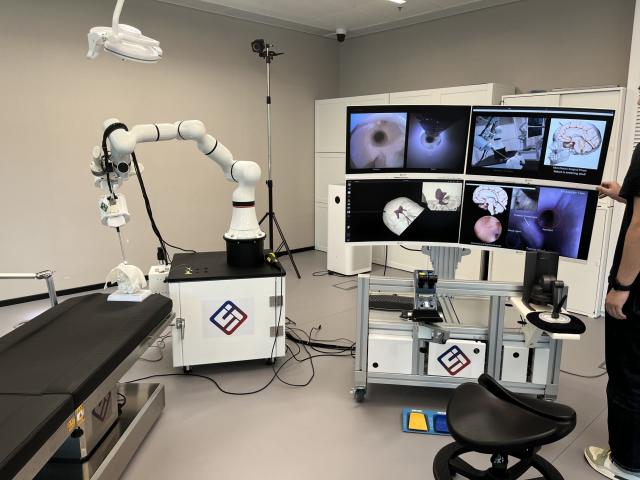Innovation is the lifeblood of progress. From the first wheel to the latest smartphone app, every step forward in human civilization has been driven by innovative ideas that evolved into tangible products or solutions. But turning an idea into a market-ready reality is no simple task. It’s a journey fraught with challenges, uncertainties, and complexities that demand a strategic and well-executed innovation process. In this blog post, we’ll delve into the essential steps of mastering the innovation process – from conception to market success.
1. Idea Generation and Validation
It all begins with an idea. Whether it’s a new product, a service, or an improvement to an existing solution, ideas spark the fire of innovation. However, not all ideas are created equal. The first step is to generate a pool of potential concepts and then systematically validate them. Validation involves researching the market, identifying potential competitors, understanding customer needs, and assessing the feasibility of the idea from technical, financial, and resource standpoints. This critical phase helps weed out impractical ideas and sets the foundation for what comes next.
2. Conceptualization and Design
Once a promising idea passes the validation stage, it’s time to flesh it out. This involves transforming the concept into a well-defined plan. Design thinking plays a crucial role here, as it encourages a deep understanding of the end-user’s perspective. This phase often includes creating prototypes, and mock-ups, and conducting user testing to refine the conMastering the Innovation Processcept and align it with the target audience’s preferences and requirements.
3. Development and Prototyping
With a solid design in place, the innovation process moves into the development phase. This is where the idea starts to take physical form. Depending on the nature of the innovation, this phase could involve coding software, engineering hardware, or even formulating new materials. Prototyping is a key component at this stage – it allows for iterative testing and refinement, reducing the risk of costly errors later in the process.
4. Testing and Iteration
Once a prototype is ready, it’s time to put it through rigorous testing. This involves not only evaluating the product’s functionality but also its reliability, durability, and user experience. Feedback from testing is invaluable. It might reveal flaws that were previously unnoticed or suggest improvements that enhance the product’s value. The iteration cycle may involve several rounds of refining the design and functionality based on testing outcomes.
5. Intellectual Property Protection
As the innovation process advances, it’s crucial to consider intellectual property (IP) protection. This step ensures that your hard work and unique ideas are legally safeguarded. Depending on the nature of your innovation, this could involve patents, copyrights, trademarks, or trade secrets. IP protection is essential to prevent competitors from exploiting your innovation without your consent.
6. Market Strategy and Positioning
A brilliant innovation won’t succeed if it doesn’t find its rightful place in the market. Developing a strong market strategy is essential. This includes defining your target audience, understanding their pain points, and crafting a compelling value proposition. How does your innovation solve a problem or meet a need better than existing solutions? Answering this question forms the cornerstone of your market positioning.
7. Marketing and Promotion
An innovation, no matter how groundbreaking, won’t gain traction without effective marketing and promotion. This is where you tell the world about your creation. Utilize various channels – digital marketing, social media, traditional advertising – to create awareness and generate interest. Crafting a compelling and relatable narrative around your innovation can captivate potential customers and investors alike.
8. Funding and Investment
In many cases, turning an idea into a market-ready product requires significant financial resources. This is where funding and investment come into play. Depending on your circumstances, you might opt for bootstrapping, seeking venture capital, crowdfunding, or other funding options. A well-prepared business plan, backed by solid market research and a clear growth strategy, can attract the necessary investment to fuel your innovation journey.

9. Manufacturing and Scaling
As demand for your innovation grows, you’ll need to transition from prototype production to full-scale manufacturing. This phase requires meticulous planning to ensure consistent quality and efficient production processes. Supply chain management, logistics, and quality control become central concerns as you work to meet market demands while maintaining the integrity of your product. If you are looking for some information about mastering the innovation process, be sure to visit TheSecondAngle to learn more.
10. Launch and Beyond
The culmination of your efforts arrives with the official launch of your innovation. This is a pivotal moment that requires coordination, timing, and a final push in your marketing efforts. But remember, the innovation process doesn’t end here. The period after launch is just as critical. Monitoring customer feedback, analyzing sales data, and continuously improving your product based on real-world usage are all part of ensuring long-term success.
In conclusion, mastering the innovation process – from idea to market – is a multifaceted endeavor that demands a strategic mindset, perseverance, and adaptability. Each step, from idea generation to post-launch refinement, plays a crucial role in the journey. While challenges and uncertainties are inevitable, a well-structured innovation process increases the likelihood of turning a brilliant idea into a tangible reality that impacts lives and contributes to progress. So, if you’re an aspiring innovator, embrace the process, learn from every stage, and remember that every successful product or service you see today started as a simple idea in someone’s mind.





